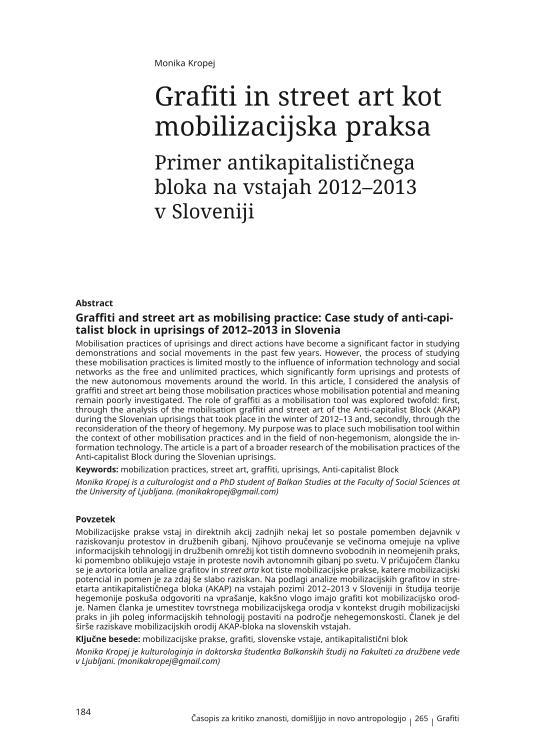Mobilisation practices of uprisings and direct actions have become a significant factor in studying demonstrations and social movements in the past few years. However, the process of studying these mobilisation practices is limited mostly to the influence of information technology and social networks as the free and unlimited practices, which significantly form uprisings and protests of the new autonomous movements around the world. In this article, I considered the analysis of graffiti and street art being those mobilisation practices whose mobilisation potential and meaning remain poorly investigated. The role of graffiti as a mobilisation tool was explored twofold: first, through the analysis of the mobilisation graffiti and street art of the Anti-capitalist Block (AKAP) during the Slovenian uprisings that took place in the winter of 2012–13 and, secondly, through the reconsideration of the theory of hegemony. My purpose was to place such mobilisation tool within the context of other mobilisation practices and in the field of non-hegemonism, alongside the information technology. The article is a part of a broader research of the mobilisation practices of the Anti-capitalist Block during the Slovenian uprisings.




